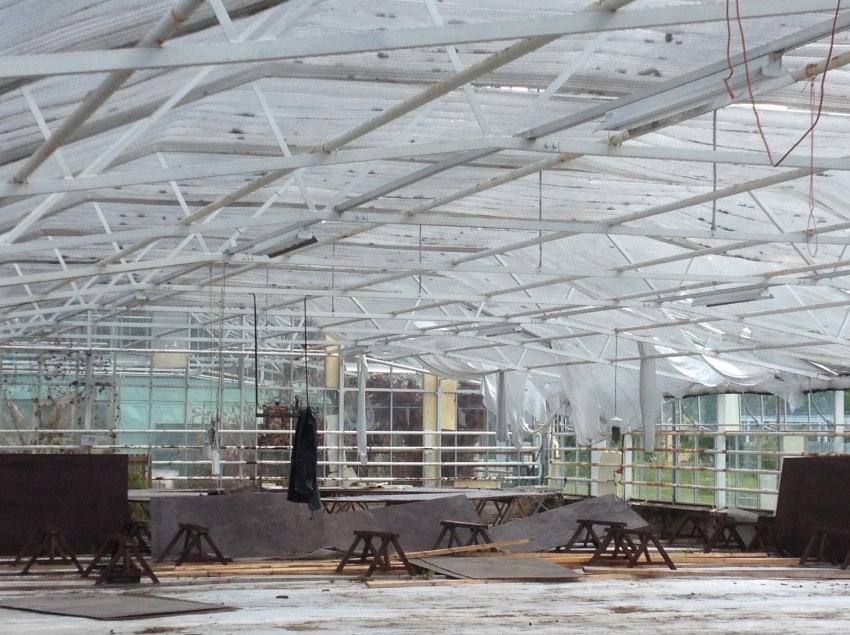Newbie greenhouse gardeners must know how to choose greenhouse flooring, considering if you need specific flooring, the proper material and if you want it to be permanent or not. Starting plants in the greenhouse does not end with only choosing the plants. The construction of the greenhouse itself will also determine the success of your cultivation.
The good news is that you don’t have to feel overwhelmed with something as simple as the greenhouse flooring. By learning about each of the three factors, you can come up with the best flooring by the end of this article. Know that the gardener’s plants and location vary, so the best greenhouse flooring per se will be specific for each individual.

How To Choose Greenhouse Flooring: 3 Factors To Consider
Do your greenhouse need flooring?
You might be wondering with this question, considering you are indeed looking for flooring for your greenhouse. However, those with small greenhouses can have it directly on the soil since you’re growing the crops in the ground anyway. The advantage of this construction is that you can expect the drainage’s quality by basing on your location’s soil.
Good drainage
Your greenhouse may not need flooring if you live in an area with good soil with natural drainage like loam. However, flooring is almost always necessary because gardeners cannot guarantee if the ground won’t get muddy and turn into dirt. The best way to know if you can skip a flooring is by testing your soil and gauge if your plants will thrive in it.
Raised beds
What if I am growing in a raised bed in the greenhouse? If this is the case, you can also skip the flooring to allow your plant roots to grow deeper. To make navigation indoors easier, you can create a pathway made of gravel instead.
The University of Georgia also recommends crushed stone or cinders. If you want something more challenging, brick or concrete also makes an excellent path, but keep in mind that loose materials promote better humidity, aeration, and surface absorption.
Flooring material
Organic vs. non-decomposing
When choosing a flooring material for the greenhouse, it can get overwhelming because of the many options available. If you want to go organic, you can use wood chips and sawdust at the expense of them not being long-lasting. You can also go with cement, brick, gravel, or wood if you want a more durable flooring.
If you opt to use concrete or wood, it’s worth emphasizing that you need to provide a drainage system. Otherwise, you run the risk of developing mold in the greenhouse. On the other hand, materials like brick or flagstone will help you maintain heat during the night if you live in a cold region.
Another consideration is if you’re working extended periods in the greenhouse, you need a textured flooring for traction to provide safety.
Weed mats
You can also improve your flooring by using weed mats, especially if you have a commercial greenhouse. This will keep weeds and pests at bay to minimize the potential labor in a large-scale greenhouse. If you want a more aesthetically pleasing flooring, lava and landscape rocks are conducive, but be wary of costs and maintenance.
Concrete
Overall, if you want a specific material that’s popular among greenhouses, concrete is the answer. Ensure that it is poured and insulated to get the most out of it and prevent drawbacks in drainage and heat. Still, flooring’s choice depends on you and which you think is the most practical for your greenhouse.
Semi-permanent or permanent greenhouse flooring?
The article discussed earlier the option of using either organic or non-decomposing materials. This is also somewhat related to the next consideration, which is the need for permanent or semi-permanent greenhouse flooring. The organic materials are prone to decomposing over time, which meant you’ll eventually have to replace them.
If you want a permanent greenhouse flooring, then your choice includes concrete, wood, or bricks. The initial costs compared to semi-permanent materials like pine needles or sand will be higher, but they are durable enough for extended use. It would also help to consider that you’ll need weed barriers for semi-permanent materials to prevent grasses and other organisms from growing in the greenhouse.
Conclusion
It is rewarding to grow crops in the greenhouse because it helps ensure healthy plants and good yield. But you also need knowledge in the structure of the greenhouse itself, including how to choose greenhouse flooring correctly. Keeping three factors in mind, you should end with a specific material that will suit you best.
The three considerations for choosing greenhouse flooring includes whether you need one, the particular material for the flooring and if you’re looking for a permanent or semi-permanent flooring. You should also keep in mind if you want something high-maintenance, or if you want to ensure that weeds and pests will always be at bay. You might not even need a flooring itself if your soil is ideal.
In general, concrete is the most popular and safest choice because it provides good drainage and heat retention. However, each gardener’s best greenhouse flooring varies because of the different factors that come into play. They include costs, availability, and duration of the intended usage.
